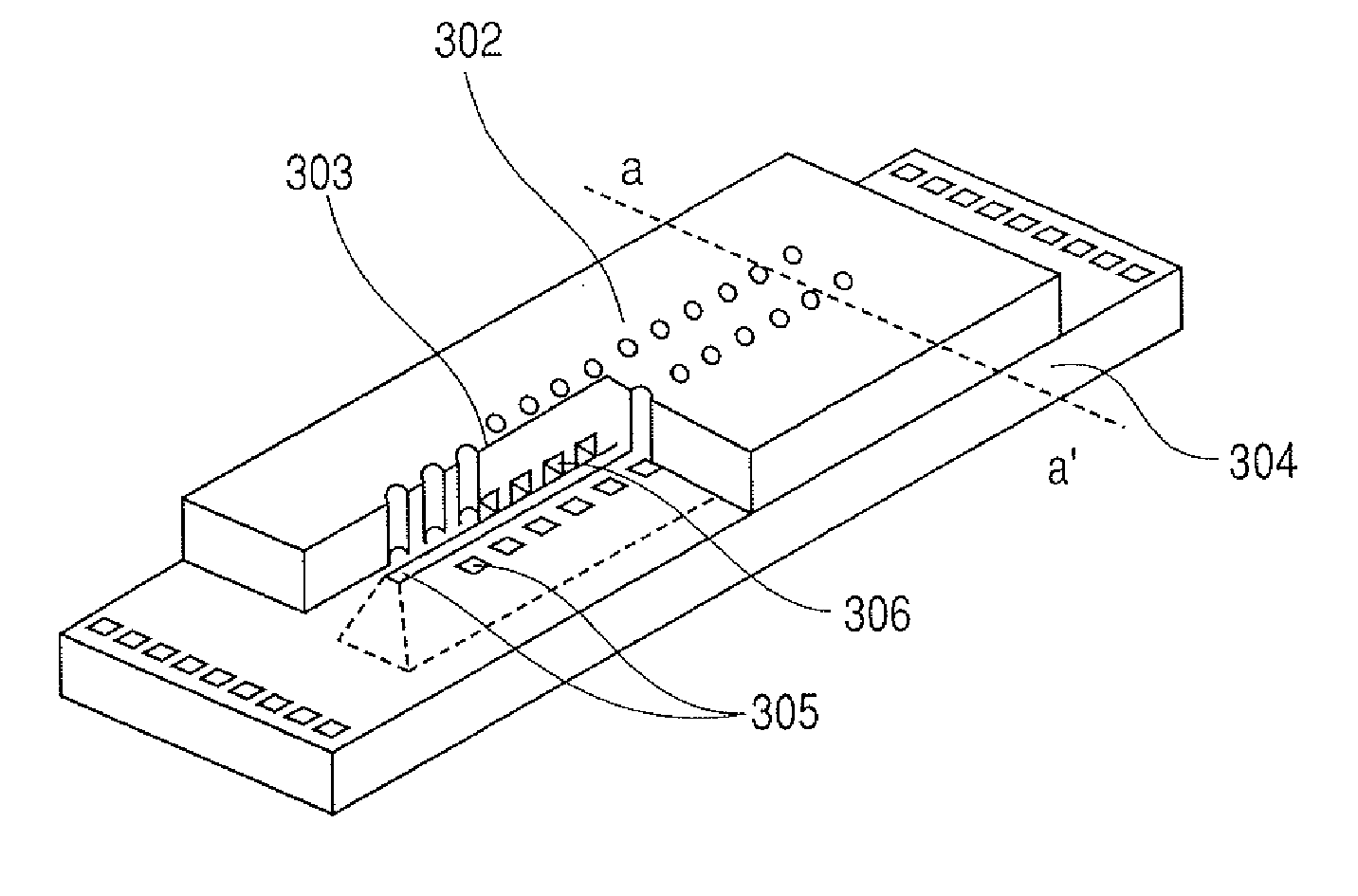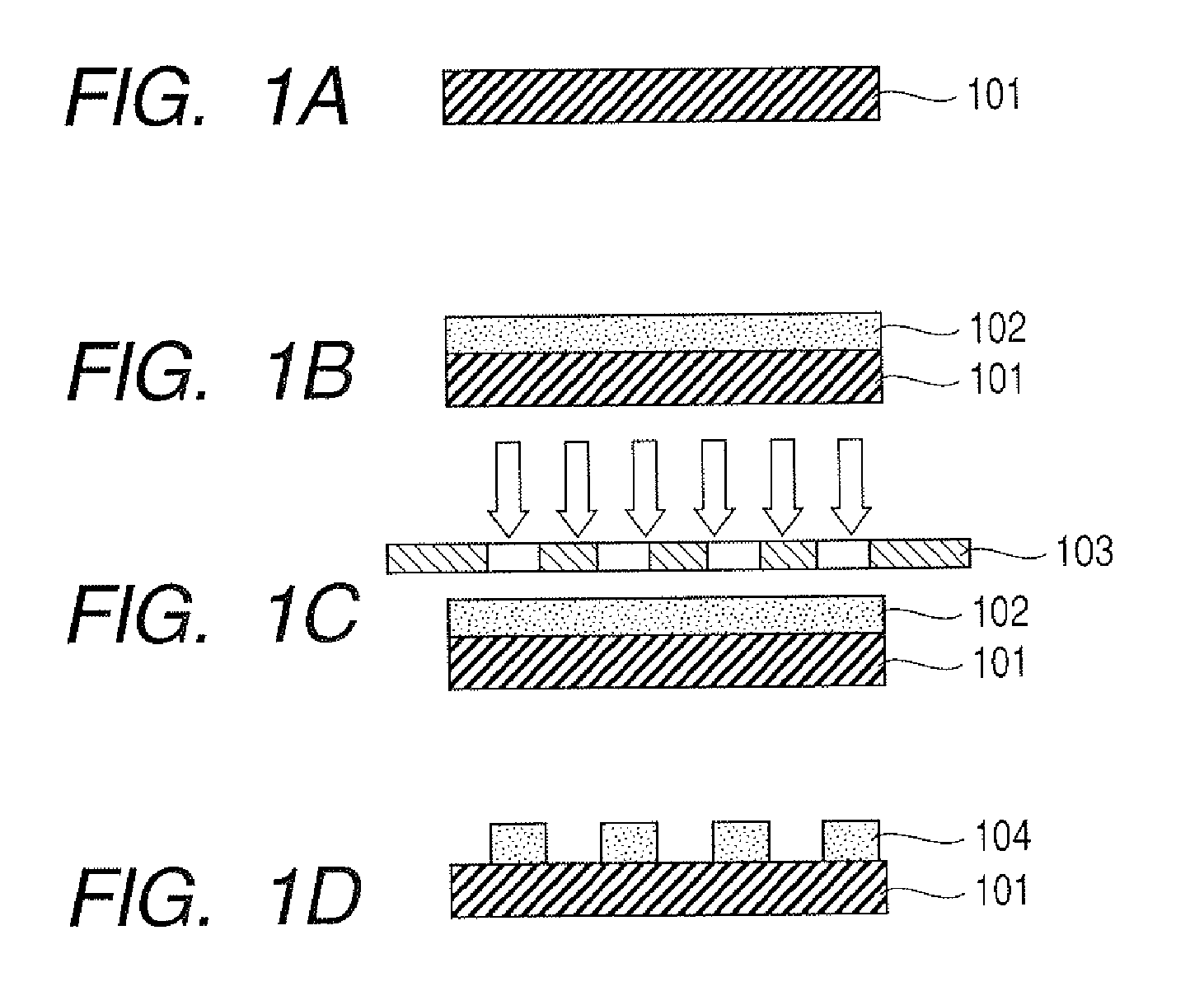Polyfunctional epoxy compound, epoxy resin, cationic photopolymerizable epoxy resin composition, micro structured member, producing method therefor and liquid discharge head
- Summary
- Abstract
- Description
- Claims
- Application Information
AI Technical Summary
Benefits of technology
Problems solved by technology
Method used
Image
Examples
synthesis example 1
[0113]A compound represented by the formula (28), which is an example of the polyfunctional epoxy compounds (I), was synthesized by a following method.
synthesis example 1-1
Synthesis of dimethyl 5-benzyloxyisophthalate (31)
[0114]
[0115]The reaction described in the formula (29) was executed in the following manner.
[0116]In a flask equipped with an agitator, a reflux condenser and a thermometer, 25.0 g (112 mmol) of dimethyl 5-hydroxyisophthalate (30) (manufactured by Tokyo Chemical Industry Co.), 100 ml of dehydrated acetonitrile (manufactured by Wako Pure Chemical Industries Ltd.) and 25 ml of dehydrated dimethylacetamide (manufactured by Wako Pure Chemical Industries Ltd.) were charged. 22.0 g (159 mmol) of potassium carbonate (manufactured by Kishida Chemical Co.) and 26.5 g (155 mmolf benzyl bromide (manufactured by Tokyo Chemical Industry Co.) were added to the obtained solution, which was then agitated for 2 hours under refluxing and under a nitrogen atmosphere.
[0117]After the reaction solution was cooled to the room temperature, potassium carbonate was filtered off and 1N hydrochloric acid was added at 0° C. The product was extracted with ethyl a...
synthesis example 1-2
Synthesis of dibutene 5-benzyloxyisophthalate (33)
[0121]
[0122]The reaction described in the formula (32) was executed in the following manner.
[0123]In a flask equipped with an agitator, a reflux condenser, a Dean-Stark trap and a thermometer, 10.0 g (33.3 mmol) of dimethyl 5-benzyloxyisophthalate (31) (manufactured by Tokyo Chemical Industry Co.), 36.3 g (503.4 mmol) of 3-buten-1-ol (manufactured by Tokyo Chemical Industry Co.), 45.8 g (331.3 mmol) of potassium carbonate (manufactured by Kishida Chemical Co.) and 100 ml of dehydrated acetonitrile (manufactured by Wako Pure Chemical Industries Ltd.) were charged. The obtained solution was then agitated for 2 hours under refluxing and under a nitrogen atmosphere.
[0124]After the reaction solution was cooled to the room temperature, potassium carbonate was filtered off and 1N hydrochloric acid was added at 0° C. The product was extracted with ethyl acetate, and the extract liquid was rinsed with a saturated aqueous solution of sodium ch...
PUM
| Property | Measurement | Unit |
|---|---|---|
| Structure | aaaaa | aaaaa |
| Energy | aaaaa | aaaaa |
| Valence | aaaaa | aaaaa |
Abstract
Description
Claims
Application Information
 Login to View More
Login to View More - R&D Engineer
- R&D Manager
- IP Professional
- Industry Leading Data Capabilities
- Powerful AI technology
- Patent DNA Extraction
Browse by: Latest US Patents, China's latest patents, Technical Efficacy Thesaurus, Application Domain, Technology Topic, Popular Technical Reports.
© 2024 PatSnap. All rights reserved.Legal|Privacy policy|Modern Slavery Act Transparency Statement|Sitemap|About US| Contact US: help@patsnap.com










